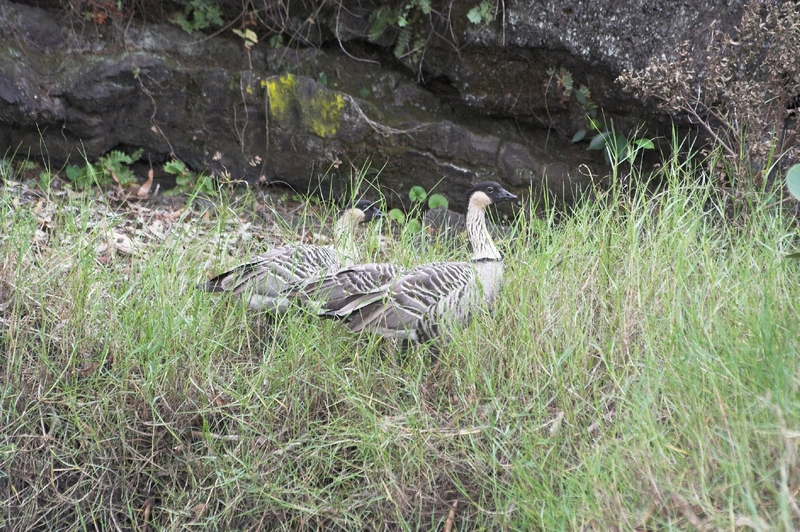|
| Query: black cat | Result: 427th of 674 | |
Hawaiian Goose, N??n?? (Branta sandvicensis) - Wiki
| Subject: | Hawaiian Goose, N??n?? (Branta sandvicensis) - Wiki
| |

| Resolution: 1500x998
File Size: 1558568 Bytes
Upload Date: 2008:01:08 13:49:03
|
ERROR : Server Busy(-1105)
ERROR : Server Busy(-1105)
Hawaiian Goose, N??n?? (Branta sandvicensis) - Wiki
Hawaiian Goose
From Wikipedia, the free encyclopedia
Order: Anseriformes
Family: Anatidae
[Photo] Hawaiian Goose, N??n?? (Branta sandvicensis). A pair of Nene in downtown Hilo, Hawaii in May 2007. Photo taken by James Hays (http://en.wikipedia.org/wiki/User:Jhhays).
The Hawaiian Goose or N??n??, Branta sandvicensis, is a species of goose endemic to the Hawaiian Islands. It shares a recent common ancestor with Branta canadensis, the Canada Goose. The official bird of the State of Hawai??i, the N??n?? is exclusively found in the wild of the islands of Maui, Kaua??i and Hawai??i. A larger, extinct and possibly flightless species, the N??n??-nui (Branta hylobadistes) was present in prehistoric times on Maui; related, but hitherto undescribed forms also occurred on Kaua??i and O??ahu, and there was a gigantic, flightless relative on the island of Hawai??i.
The N??n?? gets its Hawaiian name from its soft call.
The species has a black head, buff cheeks and heavily furrowed neck. Bill, legs and feet are black. The young birds are as the male but duller brown and with less demarcation between the colors of the head and neck, and striping and barring effects are much reduced. Bill, legs and feet as for the adult.
The female Hawaiian Goose is similar to the male in coloring but slightly smaller.
Its strong toes have much reduced webbing, an adaptation to the lava flows on which it breeds. It mates on land unlike most other wildfowl.
This is the world's rarest goose. Once common, hunting and introduced predators such as mongooses, pigs, and cats reduced the population to 30 birds by 1952. However, this species breeds well in captivity, and has been successfully re-introduced so in 2004 it was estimated that there were 500 birds in the wild (and good numbers in wildfowl collections). However, there is some concern of inbreeding due to the small population of birds. The nature reserve WWT Slimbridge in England was instrumental in the successful breeding of N??n?? geese in captivity, under the direction of the leading conservationist Sir Peter Scott, during the 1950s, for later re-introduction into the wild in Hawaii. There are still Nene geese at Slimbridge today.
http://en.wikipedia.org/wiki/Hawaiian_Goose
| The text in this page is based on the copyrighted Wikipedia article shown in above URL. It is used under the GNU Free Documentation License. You may redistribute it, verbatim or modified, providing that you comply with the terms of the GFDL. |
|
^o^
Animal Pictures Archive for smart phones
^o^
|
|